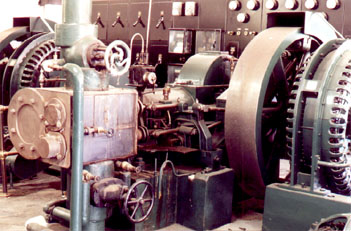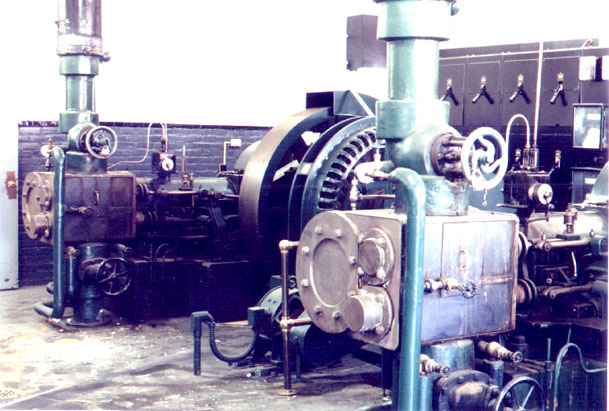
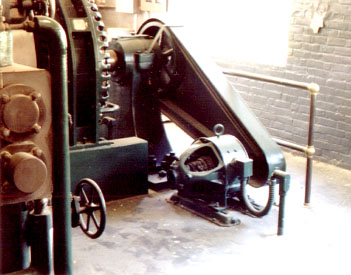 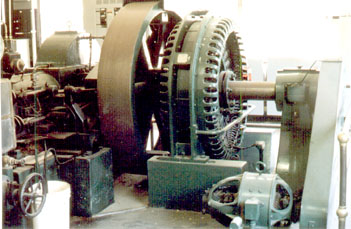 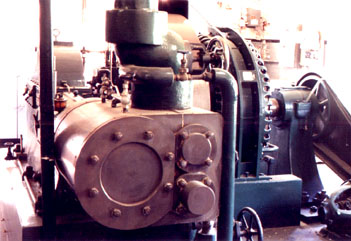 |
In July, 1997, I visited ISSES member Frank Coughlin, who lives in Sterling, Massachusetts. Frank owns the complete engineering drawings from the Fitchburg Steam Engine Company, which he has graciously made available to me for research into that organization. While visiting staying with Frank, he took me to see a number of interesting steam sites, which are not readily accessible to the general public, including the powerhouse at the Worcester, Massachusetts, jail. The buildings that now house the jail were originally constructed as a tuberculosis hospital, and only became a jail after the hospital closed and the property and buildings were purchased by Worcester County. The hospital staff residence, a smaller structure detached from the hospital, was converted to house the jail. The larger hospital building is mostly unused, except for the powerhouse, which supplies heating steam and emergency electric power to the jail. Residing in the hospital powerhouse are three 125 horsepower Fitchburg 12" bore by 13" stroke high speed steam engines (serial nos. 2758, 2759, 2760), their directly connected alternators, excitors, and switch-gear. All three sets are identical, and the switchboard provides for the parallel operation of all three units. The plant is in excellent condition, and I believe that it would operate with very little effort, if the main steam header were reconnected to the boiler. The plant layout consists of a boiler room, located in an open space two stories in high, with the engine room located in a second story room at one end, creating a "balcony" view into the boiler room through internal windows. The original boilers have been removed, being replaced by an oil or gas fired 8.4 million Btu per hour 1973 Cleaver-Brooks package boiler, which provides 150 psi steam. Needless-to-say, there is now a lot of empty space in the boiler room, even after the diesel powered 312.5 kva alternator (Feranti Division of Dynamics Corporation of America) was installed to replace the steam engines for backup power. The original date of the powerhouse in unknown, but from the engines' design, I would guess it to be in the 1920's. The Fitchburg Steam Engine Company built high-speed engines with three different valve arrangements: (1) a single piston valve for admission and exhaust, operated from the shaft governor eccentric by a simple linkage through a rocker arm; (2) separate admission and exhaust valves (each with head and crank end valves secured to a single valve stem) driven by separate eccentrics through separate rocker arms; and (3), the top-of-the-line design which had separate head and crank end admission valves, independently actuated through the classic Fitchburg cam movement, combined with the same exhaust valve arrangement as (2). The Worcester Jail engines are of design (2), and were set to govern at 257 r.p.m., which produced 60 Hz from the 28 pole (14 pairs) Westinghouse alternators. Each three phase alternator is rated at 93.8 kva. Five v-belts, driven from a pulley located on the main crankshaft, outboard from the pedestal bearing, turn each excitor dynamo armature at 1200 rpm, producing 5.5 kW at 125 volts d.c. While not immediately endangered, it is believed that future plans for the building space will eventually require the removal of the Fitchburg engines. Anyone with an interest in preserving some or all of this fine powerplant should contact Robert E. Lindquist, PO Box 311, Nescopeck, PA 18635, or telephone (570) 752-2279, or by e-mail at: relisses@ptd.net |
